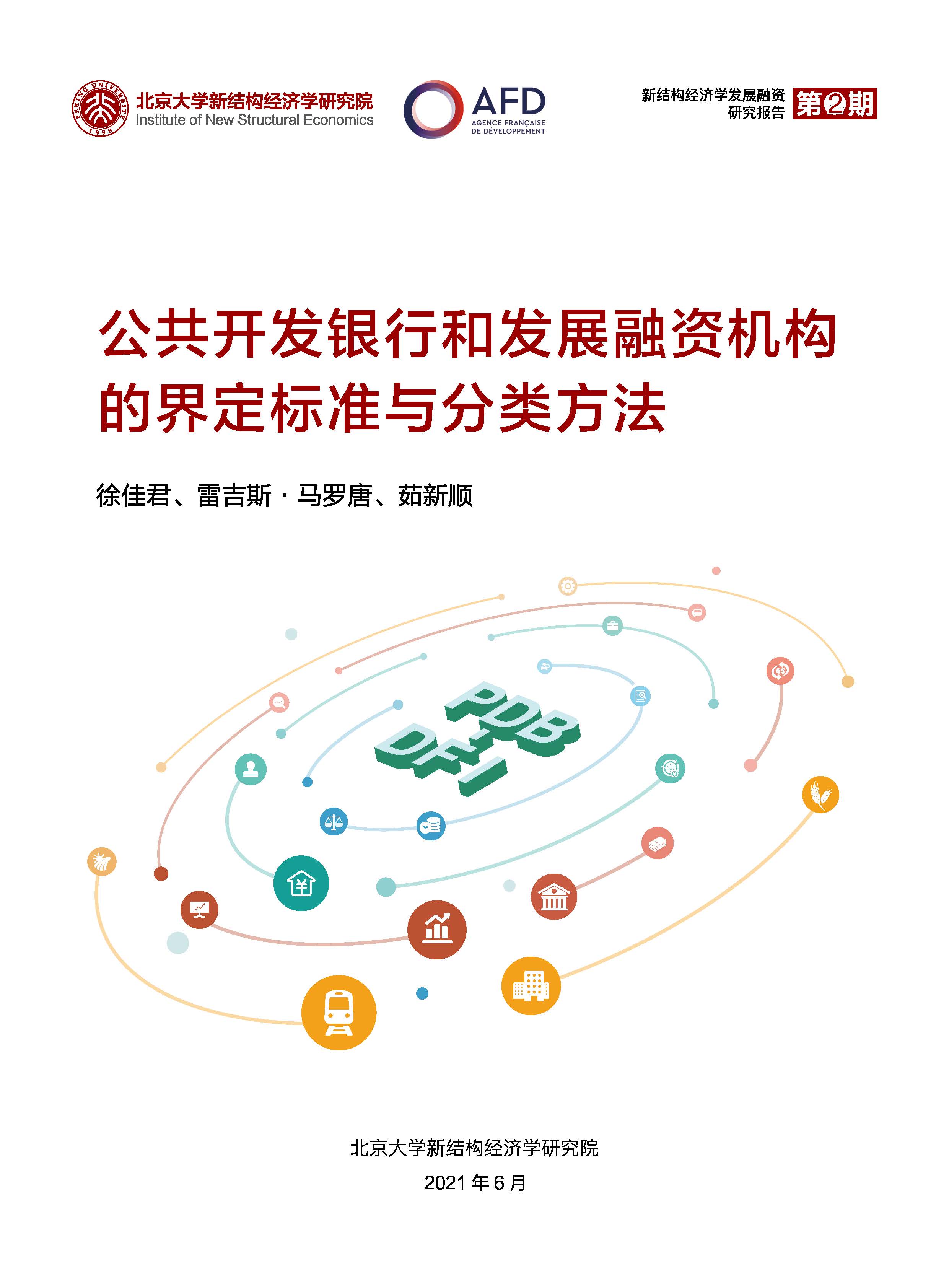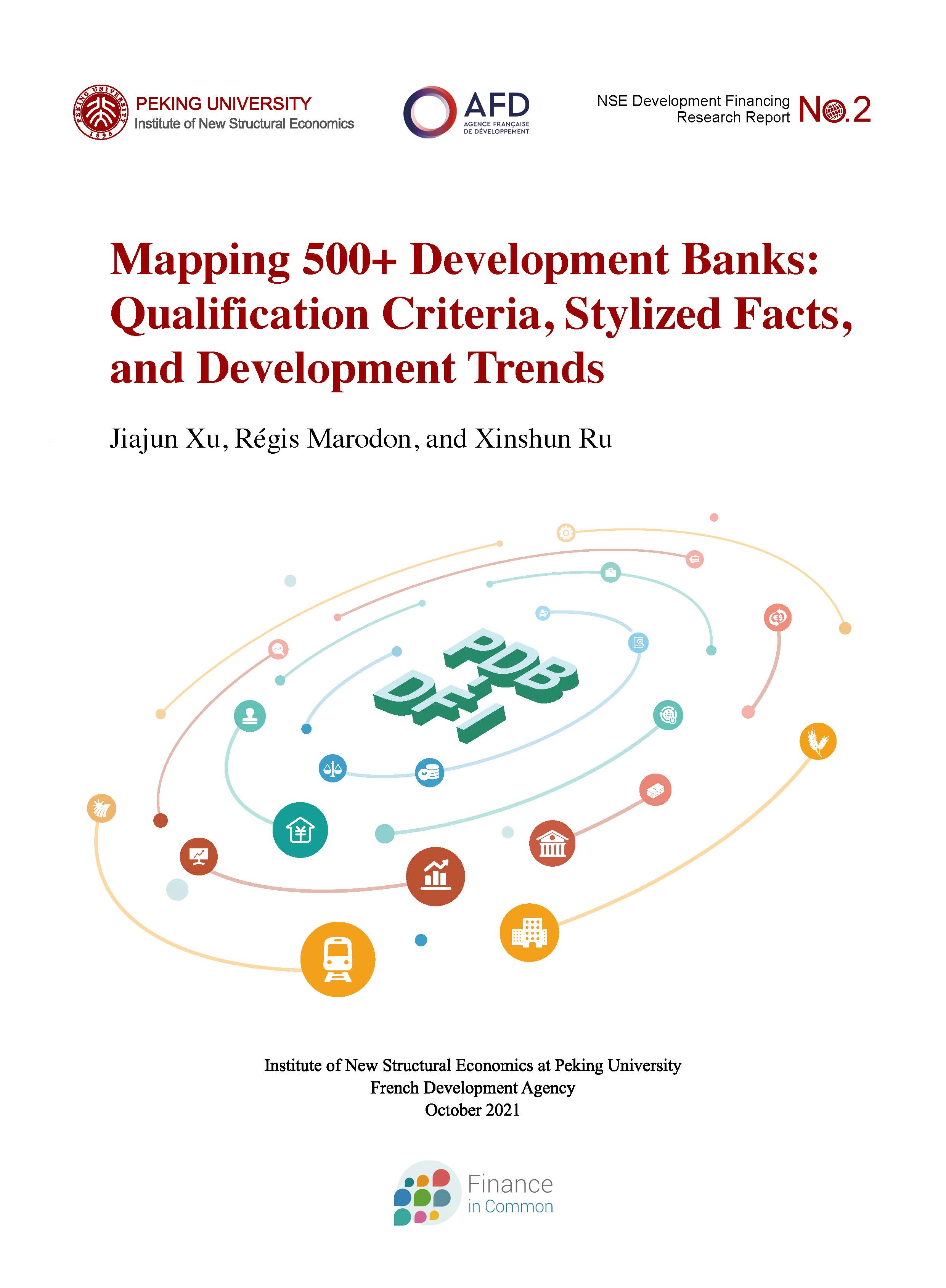英文首页﹀
INSE-AFD Joint Database Report Launched——“Mapping 500+ Development Banks——Qualification Criteria, Stylized Facts and Development Trends”
2021-10-13
Building on the initiative by the development financing research program from the Institute of New Structural Economics (INSE) at Peking University to build the world's first-ever database on development financing institutions, this report, co-authored by Jiajun Xu (the Executive Deputy Dean of INSE), Régis Marodon (senior advisor on sustainable finance at French Development Agency, AFD) and Xinshun Ru (research director on development financing research program at INSE), aims to refine the qualification criteria of PDBs and DFIs and propose potential typologies to reveal their vast diversities, stylized facts and development trends.
Although PDBs and DFIs can potentially play a more and more important role in overcoming crises, tackling climate change, and promoting economic structural transformation worldwide, there is a huge gap in terms of identifying these public financial institutions and collecting relevant data. To fill this gap, the development financing research program of the INSE devoted more than two years to build the world's first development financing institution database. In May 2019, the project team released the inaugural report entitled "Mapping Development Finance Institutions Worldwide: Definitions, Rationales, and Varieties" co-authored by Professor Jiajun Xu, Dr. Xiaomeng Ren, and Ms. Xinyue Wu at the INSE. The inaugural report proposed criteria for identifying DFIs and systematically collected them globally. The inaugural report also presented relevant stylized facts based on first-hand data collection.
Build on the INSE's inaugural report on DFIs, INSE and AFD have joined hands by creating synergies between INSE's academic rigor and AFD's rich practical experiences to refine the qualification criteria of the PDBs and DFIs. The refined criteria are as the follows:
(1) They have legal personality, separate financial account, dedicated personnel, and are not established for accomplishing a specific short-term goal [in distinction with government credit programs, government entities, certain trust funds managed by public institutions, special purpose vehicles, etc.].
(2) Their main products and services are to deploy financial instruments such as loans, equity, guarantee rather than providing pure grants only [in distinction from grant-execution agencies and other non-financial institutions carrying out public mission such as central banks].
(3) Their funding sources go beyond periodic budgetary transfers from governments [as distinguished from aid agencies that primarily receive government budgetary transfers].
(4) They proactively pursue a public policy-oriented official mandate in their charters [in distinction with profit-driven commercial banks].
(5) They have government steering in shaping their corporate strategies, i.e., governments initiate or establish DFIs, act as the majority shareholders, sit on the Board of Directors to play a steering role in pursuing the development-oriented mandate, or provide the significant support for fund-raising) [as distinguished from grass-root organizations such as microfinance institutions whose goals are in line with the public policy's objective]
Applying the above five criteria in a consistent manner, we have identified 527 PDBs and DFIs worldwide and collected their basic information, such as the establishment year, ownership structure, geographical scope of operation, official mandate, income levels of their countries where national PDBs and DFIs are located, as well as financial indicators such as total assets. Furthermore, we classify the identified institutions and present stylized facts on the ownership structure (who owns it), operation scope (where it operates), scale (how large in terms of total asset), official mission (what goal it pursues) and the income level of their countries, to reveal the diversity of PDBs and DFIs.
The academic paper of this report has been accepted and will be published by the top open-source economic journal – China Economic Quarterly International. At the second Finance in Common Summit on October 20, 2021 in Rome, the first global database on PDBs and DFIs worldwide will be officially launched. The dataset will be available for free downloading by that time at the newly constructed data visualization website (https://www.nse.pku.edu.cn/dfidatabase/index.htm). For colleagues who would like to cite our paper and use the database, please use the following citation: Xu, Jiajun, Régis Marodon, Xinshun Ru, Xiaomeng Ren, and Xinyue Wu. 2021. “What are Public Development Banks and Development Financing Institutions?——Qualification Criteria, Stylized Facts and Development Trends”. China Economic Quarterly International, volume 1, issue 4.
We hope that our pilot efforts to build the world's first database of PDBs and DFIs can promote original research on their rationales, operations, and development effectiveness, so as to enhance our understanding of such important public financial institutions and realize their full potentials.
Download the Report:
Chinese Version English Version



